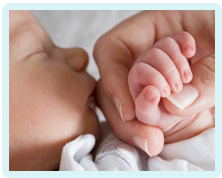
Late Repair of Anal Sphincter After Birth
If you suffer an obstetric anal sphincter injury while giving birth, it must be repaired shortly after the delivery.
If this does not happen, a repair may be conducted at a later date – known as a secondary repair. However, a secondary repair is not always recommended as the outcome can be poor. Therefore the patient will have to live with a defect in her sphincter.
If you have developed complications because your tear was not diagnosed and repaired in a reasonable amount of time, you could be entitled to claim compensation. Contact us for more information.
Surgical repair for sphincter injury
If a sphincter injury is not diagnosed and/or properly repaired after childbirth, further treatment options may be explored. Many patients will be recommended for sacral nerve stimulation. But if the perineum is so deficient that it is causing distress for the patient, a surgical repair may be better.
A very deficient perineum is an indication for a repair of the anal sphincters with restoration of the perineum. If a restoration is attempted without a repair of the anal sphincter muscles, the perineum just shortens again as it heals.
Success of secondary repairs
Secondary repair of the anal sphincters has become controversial since 2000 when a paper came out from St Mark's Hospital declaring that the 5 year results were poor. The paper assessed the long-term functional outcome of 38 patients and found that:
- None of the patients was fully continent to both stool and flatus (wind)
- Four were totally continent to solid and liquid stool
- Six had no faecal urgency
- Eight had no passive soiling
- 20 wore incontinence pads
- 25 report lifestyle restrictions
Due to this paper, surgeons are doing fewer secondary repairs than they were prior to 2000. Some surgeons have their own criteria for proceeding with a secondary repair, such as:
- Incontinence occurring after injury to the anal sphincter muscle rather than years down the line when factors other than the injury have come into play (e.g. the menopause)
- A full length defect in the external sphincter muscle that amounts to more than a scar in width
- Activity in the external anal sphincter muscle when examined
- Incontinence to stool rather than to wind alone
- The achievement of formed stools as those with normal sphincters can be incontinent to loose stools
- Women who are not grossly obese as they tend to get wound infections leading to breakdown of the repair
Poor outcome because tear was not recognised
If you have suffered a poor outcome because your perineal injury was not detected and treated quickly enough, you could have grounds for a claim. Contact us for expert legal advice.
Would You Like Assistance from Specialist Birth Injury Claims Solicitors?
If you would like to benefit from a service of excellence with total commitment to client care from a small and friendly team, Glynns are ready and waiting to help you.
Please call us on 0800 234 3300 (or from a mobile 01275 334030) or complete our Online Enquiry Form.



